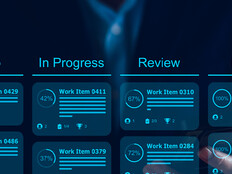How Agencies Can Best Identify Technical Debt
The best way to think about technical debt is to treat it similarly to financial debt. There is no simple answer to determining whether it is good or bad. Instead, agencies can try to determine what some of the indicators are for where it came from. That can help ensure that agencies are monitoring and planning better.
This applies not just to software but to other IT elements as well. For example, imagine an agency is setting up a new data center. The agency’s IT leaders might be planning for power, heating and cooling, but might not know that they need to drill through a wall to access the uninterruptible power supply. They likewise might not know that the wall they have placed equipment beside cannot be drilled through.
Consider an agency IT leader that just got approval from agency leadership to adopt a zero-trust approach to its networking. The IT leader got 2 percent more in its budget to do so but did not consider the cost to maintain the new technologies or systems and how they might grow over time.
The IEEE paper “Towards an Ontology of Terms on Technical Debt” identifies 13 types of technical debt and a set of key indicators for each, including debts related to architecture, code, documentation, infrastructure and requirements.
It’s critical to identify technical debt so that it can be addressed. However, that cannot truly happen unless IT leaders stop acting as firefighters and think strategically about their investments.
EXPLORE: What will be the long-term effects of pandemic responses on federal IT?
Addressing Technical Debt in Government
Often, to address technical debt effectively, IT leaders need to triage. CIOs and their teams should poll mission units and program managers to identify the 10 most critical applications or systems they operate. Then, ask a simple yes or no question: Can I retire this?
If it’s a critical, modern app like Office 365, the answer is probably no. If it’s a less mission-critical app, the answer might be yes. For those that the agency will retire, the next question becomes whether the agency will actually retire it or refactor it.
The biggest step IT leaders can take is to get out of firefighting mode and become more proactive than reactive.
IT leaders at one agency cannot drag their feet on addressing technical debt in the hope that other agencies will figure things out and pick up the slack. If IT leaders across government are not working together to address the issue, common problems will be missed, and best practices won’t be identified. Now is the time to start paying down technical debt and thinking strategically.
This article is part of FedTech’s CapITal blog series. Please join the discussion on Twitter by using the #FedIT hashtag.













